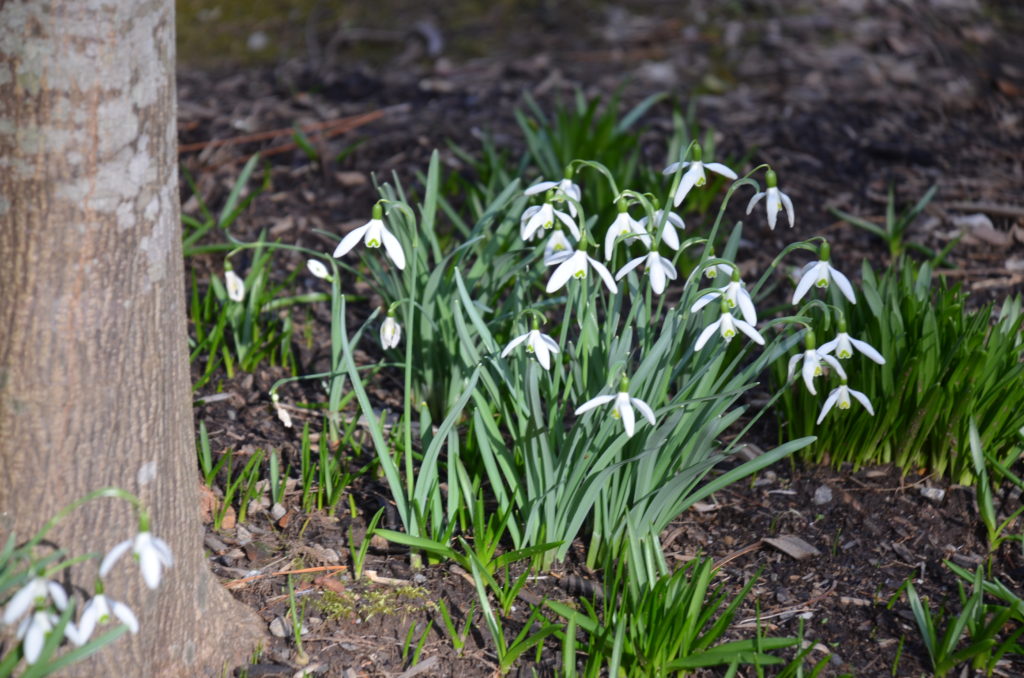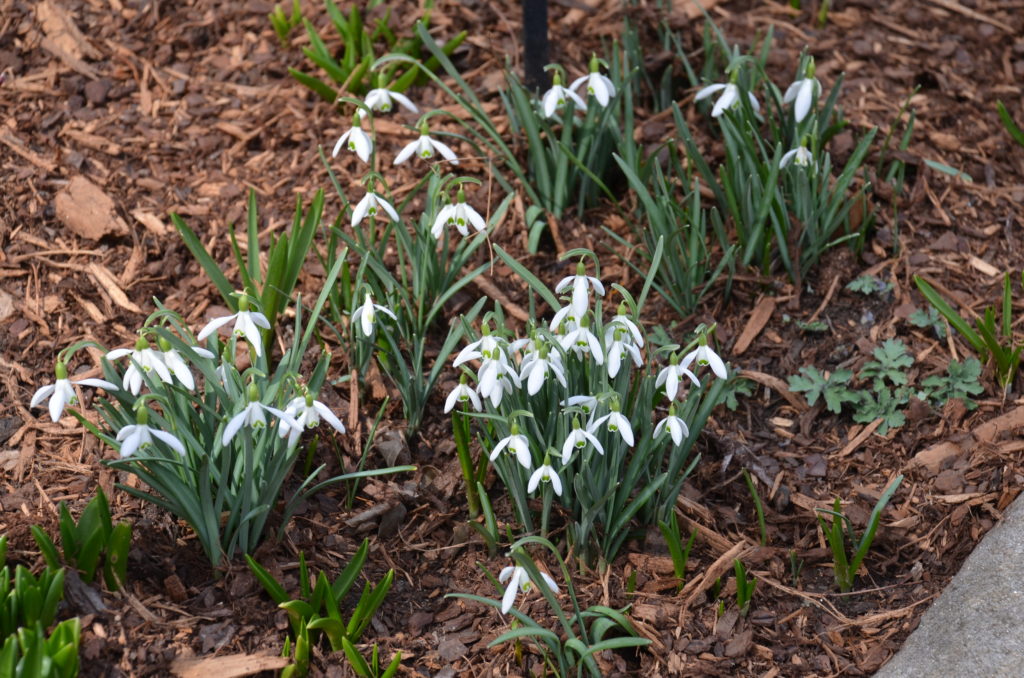
Snowdrops (Galanthus spp.) are one of the first of all spring flowers to bloom. Depending on the region, they appear in February and March, often while patches of snow is still blanketing the ground. Snowdrops belong in the small genus Galanthus, that contains approximately 20 species of bulbous perennial herbaceous plants in the family Amaryllidaceae. They are native to Europe and southwest Asia (USDA hardiness zones 3 to 7). Snowdrops are best suited to cooler climes and bulbs often lose vigor in the South.
Two popular species are G. elwesii, called the “giant snowdrop” and grows to be twice as tall as the common snowdrop (G. nivalis). Common snowdrops are 3 to 6 inches high (7–15 cm). A white “drop” flower is supported by a stalk comprised of three outer petals above three inner petals. Narrow bladed (linear) leaves are about 4 inches long. As perennials, snowdrops divide and spread freely by offsets. The plants have two linear leaves and a single small white drooping bell shaped flower with six petal-like tepals in two circles. The smaller inner petals have green markings.
Plant the bulbs 2 to 3 inches deep in the ground, in groups of 10- 20 or more bulbs in early fall. Snowdrops are small plants that don’t make much impact individually, so create a showy display by planting in multiples. Create a blanket of snowdrops that cover an area. Plant under deciduous trees and shrubs, rock gardens, border frontage, or in front of flowering shrubs, or in lawns or along woodland paths. It prefers moist, humus-rich soils, partial shade, and cooler climates. Snowdrops are listed hardy in zones 4-7, but are seen in zones 2 and 3.

Over the years drifts of grouped bulbs gradually spread. You can also mix the planting with other spring-blooming bulbs. You can plant snowdrop bulbs under deciduous trees that permit sufficient sunlight to penetrate and nourish. Provide good soil drainage and bright shade.
Snowdrops have no serious disease or pest problems. Snowdrops are found in a woodland or rock gardens planted with other late winter blooming bulbous favorites: glory-of-the-snow (Chionodoxa), crocus, winter aconite bulbs (Eranthis hyemalis), spring snowflake (Leucojum) and others.
“Snowdrops are critter-proof”, according to Brent Heath with Brent and Becky’s Bulbs in Gloucester, VA. Deer, rabbits, chipmunks, and mice do not trouble them. They are poisonous to humans and pets (dogs and cats). Do not allow pets or children to eat them. Wear garden gloves when planting bulbs to avoid skin irritation.
Snowdrop flower bulbs are small bulbs that should be planted immediately after purchase. Bulbs dry out quickly sitting around for weeks in the house or in dry soil.

 Posted in
Posted in 
